The Leica MP is touted as “the ultimate tool”. Admittedly, my perspective might be influenced by the contrarian in me, but I’ve long been quite sceptical – it’s the most expensive full production Leica film camera, but just how good could it possibly be compared to the others?? Until recently, the Leica MP was actually the only full-production Leica M film camera I hadn’t shot with. So when Des (all round good bloke and follower of 35mmc) decided he’d be happy to loan me his MP, it seemed like too good an opportunity to miss!
The basics
The Leica MP is a current production camera out of Leica. Not to be mistaken for the absurdly valuable 1950s MP or the modern digital M-P – I’m talking about the current model 35mm Leica MP. As of 2018 this camera is one of 3 film cameras made by Leica alongside the M-A and the M7. The M-A is the non-metered camera, the M7 is the the battery reliant version with an aperture priority autoexposure mode, and the MP sort of sits in the middle as the happy medium with a light meter, but is also fully (and supposedly “perfectly”) mechanical – more on that in a mo…
Paint it black…?
The Leica MP essentially comes in 3 varieties, the black paint, the silver chrome and the design-your-own “a la carte”. The black paint seems to be the most common and I suspect is more sought after. To be honest, I don’t personally see the black paint as the attractive finish most seem to. The glossiness gets tarnished quite easily with fine scratches, and eventually wears to brass on the corners. That being said, I am aware that I’m in the minority here. Most people seem to find the brassed look very appealing. Leica even go as far to say on their website that “After years of hard use, when a bit of bright brass begins to show through, it’s a sure sign to savvy photographers that the camera and its owner have shared many memorable experiences”.
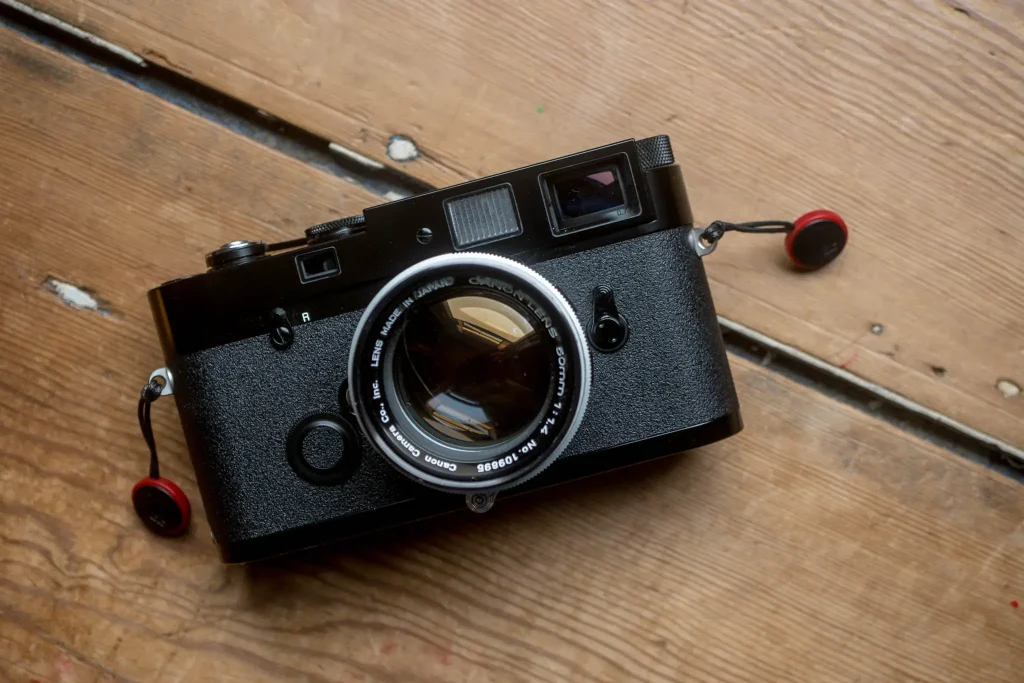
In the case of a famously brassed cameras such as Sean Flynn’s recently discovered M2, I’ll quite happily admit that some reverence applies. But when it’s just wear and tear given to a camera over years of use, to my mind all it amounts to is a bit of a tatty looking camera – albesayit a well built one. Of course, beauty is in the eye of the beholder, and as mentioned, many people find this patinated aesthetic very appealing. Fair enough I say – if you like that sort of thing who am I to argue? For my tastes, I personally prefer the more utilitarian look of the silver or especially the black chrome finish.
Mechanical Perfection and the Leica Mystique
I mention all this as it’s not the tastes of other photographers that I want to pick at, it’s Leica’s play on their brand mystique that rubs me up the wrong way. As far as I can gather, when Leica launched the MP it was touted as the ultimate Leica M film camera. Looking at Leica’s website, they never actually explicitly say what MP stands for – though it is implied on one of the subheadings on the main Leica MP website pages that it stands for “Mechanical Perfection”.
This idea of mechanical perfection is something I can get behind, but combine it with a black paint finish that will lightly wear “after years of hard use” and you have a camera that perfectly fits both the positive and negative sides of the Leica brand image. Yes they make very long lasting and durable cameras, but it’s not quite enough to sell a camera that lasts a long time through quality of build. With the black paint not being as long lasting as the camera, it ensures that those around the owner of the MP will be able to see – as Leica says – “that the camera and its owner have shared many memorable experiences”.
By saying this, to me it feels a little like Leica is attempting to tap into the reverence that people apply to the famously heavily used cameras of the likes of Sean Flynn and countless Magnum photographers. They play on people’s desires to be like those photographers, and indeed the idea that having a camera that’s like those photographers’ implies something positive to those around them. If this isn’t the case, at best, they are playing on the idea that people like to show off their expensive things.
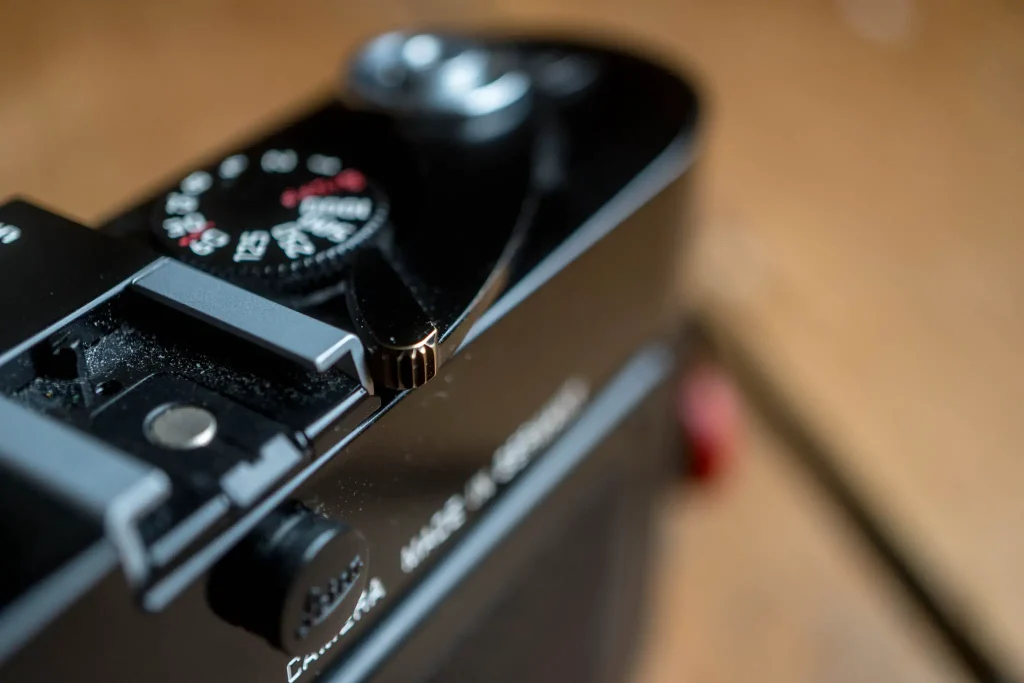
As I talk about in my recent post about the Leica mystique, I enjoy the luxury to a point, and appreciate the cameras as the nice things they are – but that’s a personal thing for me. I don’t need other people’s admiration. I already feel judged enough as someone who really likes and often waffles on about how great I think they are – not to mention the greif I get for the amount I post about them on my Instagram, etc. As such, I have no desire to show off how well worn my shiny luxury camera is in some sort of pre-specified attempt to demonstrate that I’m such an interesting person it’s apparent in the patina of my camera.
I love my Leica cameras, don’t get me wrong, but I love them as cameras. This idea that people know “that the camera and its owner have shared many memorable experiences” is what turns them into accessories, or worse, “jewellery for rich dentists” (yawn). Leica playing on all this personal image nonsense sullies the camera behind it all and plays into the hands of those who wish to diminish those of us who do find them to be the ideal cameras for our shooting needs.
But anyway, as I say, if you like the look of a brassed camera that’s fine by me. It’s not the look I’m having a go at here, it’s the garbage that Leica attribute to it that bothers me. Cameras are for taking photos, at a push they are for personal haptic or aesthetic enjoyment, they might even represent historical interest – but at the point they become an accessory to personal image, I’m out.
Not my ideal Leica
What’s on the surface is one thing, but actually the Leica MP doesn’t amount to my ideal Leica under the skin either. I must be honest, I’ve always had these slightly negative views towards the MP. Because the above rubs me up the wrong way, I’ve long been less forgiving of the idea of the Leica MP feature set. To me, it’s just seemed as though it’s a bit of a showy version of the Leica M6 classic.
The M6 classic is admittedly a great camera, but as I talk about in my M6 review, it’s not the camera for me. Don’t get me wrong, I definitely get why people favour them. The combination of fully mechanical function with a built in and very simplistic light meter is very appealing, but for one reason and another, it doesn’t quite work for me.
The counter intuitive meter
As I describe in my M6 review, the way the light meter works seems counter intuitive. The meter readout in the Leica MP does have one improvement over the M6 classic. As in the later M6 TTL (and all the metered Leica Ms since) it has a 3 LED meter instead of a 2 LED meter. But unlike all those cameras, the MP shutter speed dial has the same rotational direction as the older M6 and the cameras that came before it. This might not sound like anything to be concerned with until you understand how the meter works. If you’ve not used a later model metered Leica (M6-M10 inclusive), the way the metering is displayed is via a projected LED readout in the viewfinder. In the case on the Leica MP is works as follows:
Left (right pointing arrow) LED lit – underexposed
Left LED lit and centre LED lit – 1/2 ev under
Centre LED lit – correct exposure
Right (left pointing arrow) LED lit and centre LED lit – 1/2 ev over
Right LED lit – overexposed
All sounds sensible, but because the shutter speed dial rotates clockwise to increase the shutter speed, in practice it feels as though you’re doing the opposite of what the light meter direction arrow tells you to do. As mentioned, this was an “issue” that Leica fixed in the later M6 TTL and subsequent M7 by reversing the direction of the shutter dial, but when they then made the MP they reverted to the earlier standard.
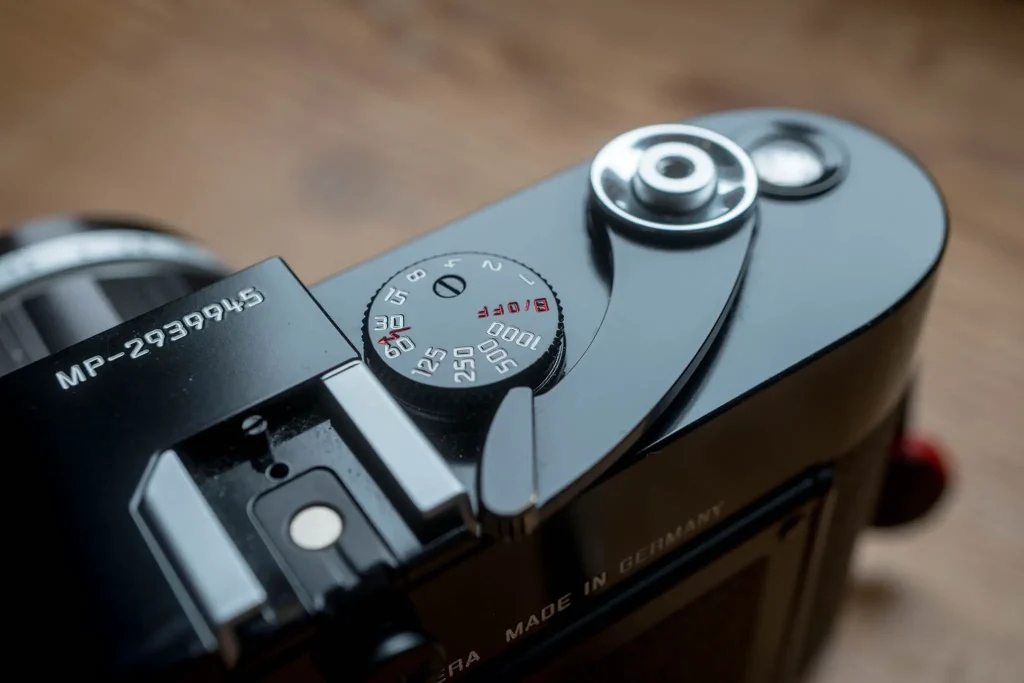
I don’t know for certain why they would do this. You might think that logic would dictate that after you make an advancement taking a step backwards doesn’t make too much sense. Of course, this sort of “logic” doesn’t always apply, especially not with Leica. And then of course there’s the fact that what’s a technological step forward, and what’s a step back is arguably subjective – a fact that I often tout on this website.
Unfortunately for me – someone who shoots a combination of older non-metered film Leica cameras, and later metered digital Leicas – the way the Leica MP works doesn’t work well for me. The issue is, if I pay attention to the meter in the viewfinder as I do with my digital cameras I’m inclined to rotate the shutter speed dial in the direction I’m used to. Having shot an M7 for a while, and then a string of digital Leicas, it’s almost muscle memory now, so almost every time I’ve used the MP the meter has confused me. The result of this is that I’ve often found myself having to look at the top of the camera to change the shutter speed, but then of course I can’t see the light meter readout anyway, so I’m just as well using an external meter.
Admittedly, this is very much my problem. Some people will prefer the traditional rotation of the dial to that which followed. This is likely especially true for those who otherwise only shoot more elderly Leica m film cameras. Given the fact that most of the of the other features of the MP are based on more traditional features of Leica cameras too, I think there’s a distinct possibility that the MP was aimed at these sorts of users too.
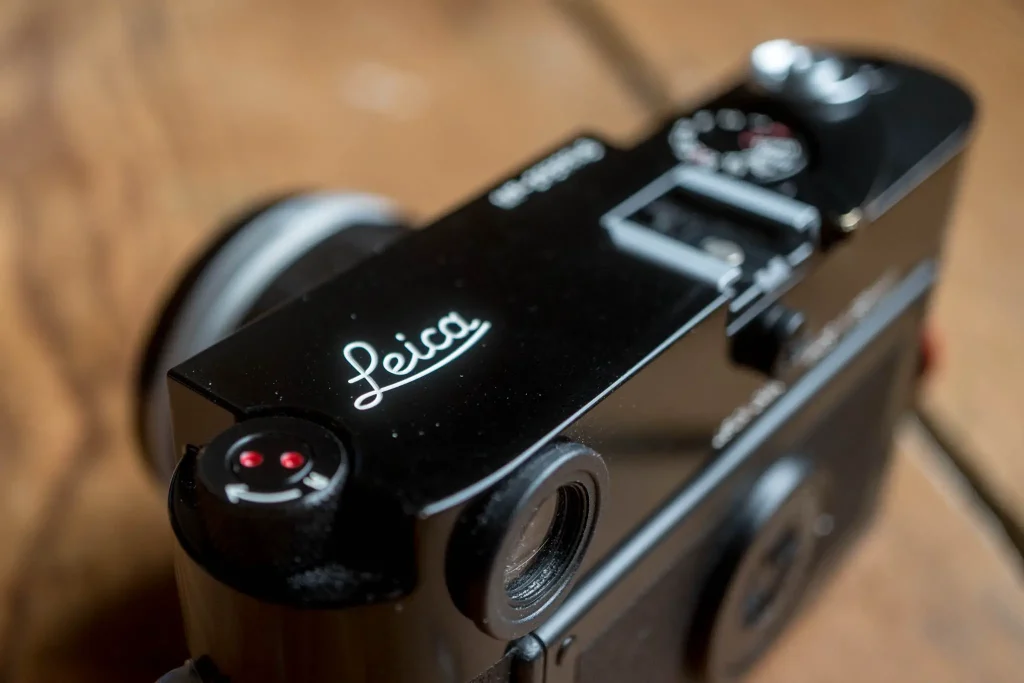
Design features
Alongside the black paint and the traditionally rotating shutter speed dial, the MP also features a few other traditional Leica m features. The full metal frame line preview lever, older shape and also full metal shutter advance and rewind knob all hark back to design features found on the M3 and M2. These are actually all preferences of mine over the later plastic tipped film advance and frame line preview lever. I even prefer the rewind knob over the later crank. I’m not fussed that it’s a little slower to use, think it looks nicer, and from experience bending the rewind crank of my M7, I can tell you that it’s less fragile too.
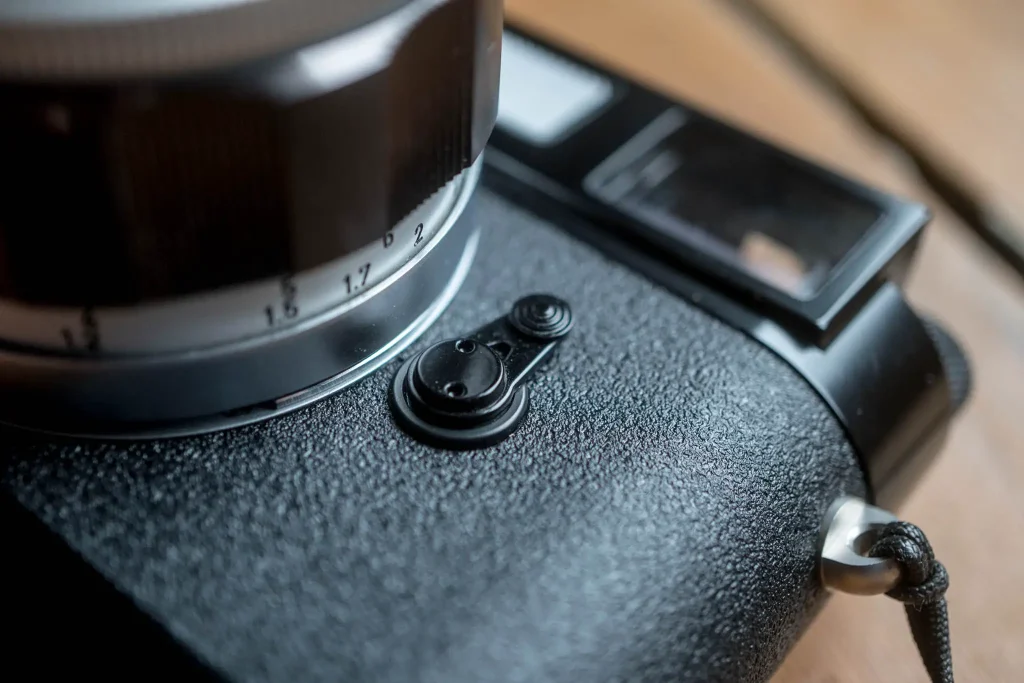
Some modern features
Fortunately, they didn’t revert to the old school with all the design features. The Leica MP retains the later quick-load pronged take-up spool that was introduced in the M4. I should say at this point, I’m not bothered in the slightest by the older removable take up spool in my Leica M3, but I know many find them to be quite frustrating. The Leica MP also has the flush viewfinder window introduced in the very late M4-Ps and M6 Classic which gives the front of the camera cleaner more minimal lines – again, this is a preference of mine over the interim sunken viewfinder of the M2 – M4-P.
Not very traditional features
A design choice I can’t fathom is the use of plastic for the ISO dial on the back of the camera and battery cover on the front. I talk about this in my Leica M7 review as being something that completely baffles me. I was basically in love with my M7 when I wrote that review too, but despite this I couldn’t let Leica off the hook for the naff feeling plastic bits. Such an odd design choice for such a high value camera. The wheel – which is admittedly just a reminder – on the back of the M-A is made of metal, and though a little fiddly to use, feels really nice. Why they couldn’t have developed something like that for this camera is beyond me.
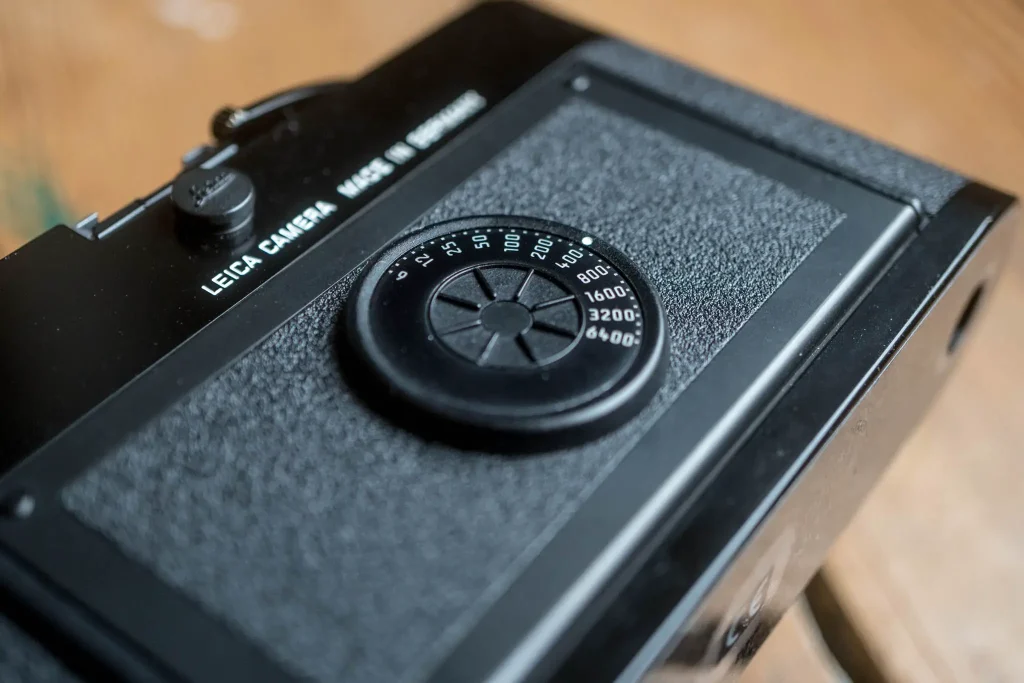
The Leica MP in use
It probably sounds like I’ve been a little harsh about this camera so far, or at very least like this review has been weighted toward the negative? I think it’s worth bearing in mind that most of this comes from very subjective preferences between the different Leica models. I’ve been fortunate enough to have tried all of the full production run Leica cameras now, with the M4-2 being the only one I’m yet to write about. There’s two things I’ve realised as I’ve worked my way through them. The first is that the differences between them all are fairly minor. But for the M5 (and CL if it counts) they are all based on the M3, with only small changes between them. Some changes might seem like advancements, and some might appear as backward steps depending on preferences. The second realisation I’ve come to is that the often tiny changes between them can still seem like huge issues when comparing one that fits ones ideals to one that even ever-so-slightly doesn’t.
In reality whilst I’ve been using the Leica MP, short of the couple of times strangers have asked me about it, I haven’t really thought about my distaste toward the black paint. With a bit of practice I’m sure I would get over the slight oddness I find with the light meter when using this camera alongside my digital Leica rangefinders too. In fact, in using the Leica MP, it’s probably fair to say that some of the scepticism you might have caught a glimpse of earlier in this post has been diminished.
I’ve found myself very impressed with the feel of the Leica MP; this MP at least. Compared to my Leica M-A, which despite some of its more traditional features feels fairly utilitarian to me, the MP just feels more refined. The flat black finish of the M-A plays a part in this, but the feel of the shutter advance is different to – it feels clockwork. It feels correct, but you can feel the gears in the mechanism. The same can even be said of my M3. Advancing the shutter in this Leica MP, you can hardly feel a hint of the mechanism, it’s just perfectly smooth… So perhaps MP does stand for Mechanical Perfection? Or maybe I just happen to have borrowed a particularly nice copy? Either way, ignoring my personal preferences for a moment, it’s definitely fair to say that this MP feels like an incredibly well made camera that has been a pleasure to shoot with!
Some photos
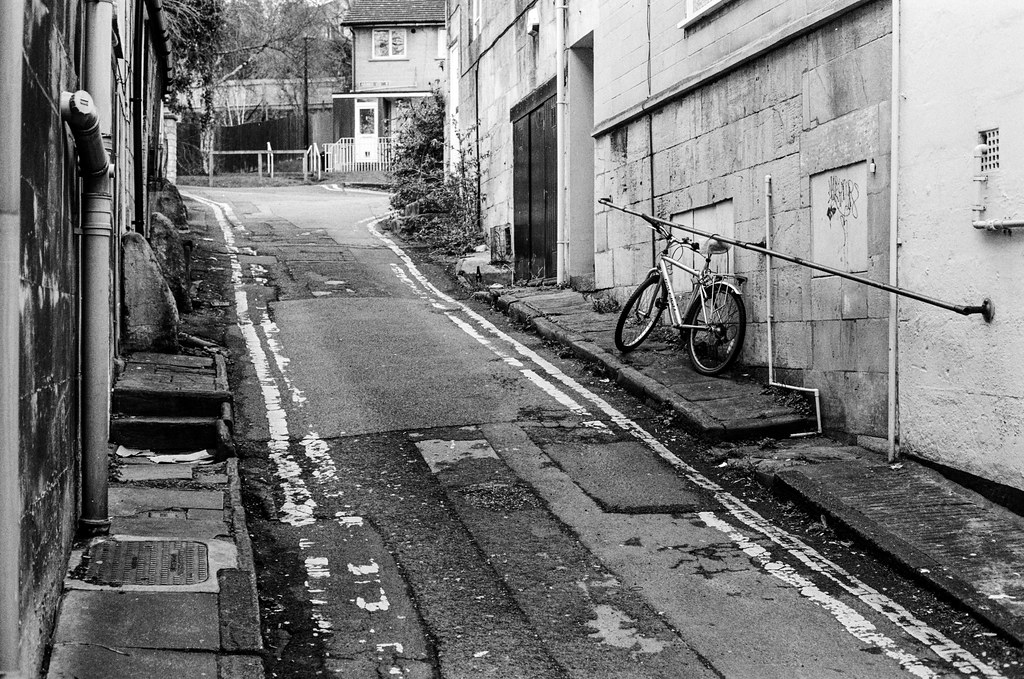
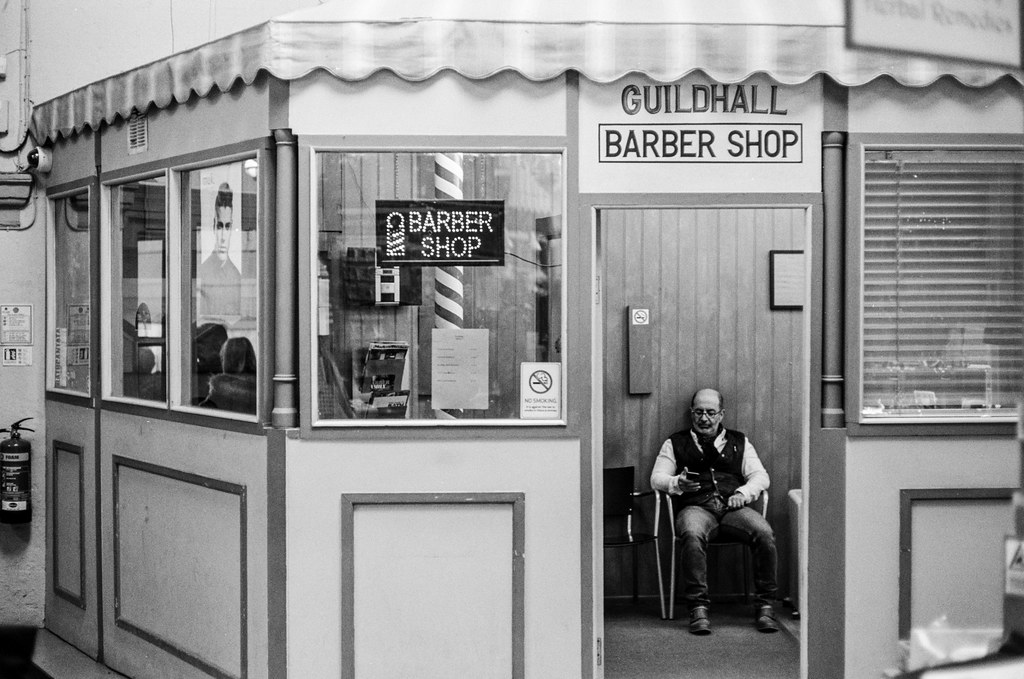
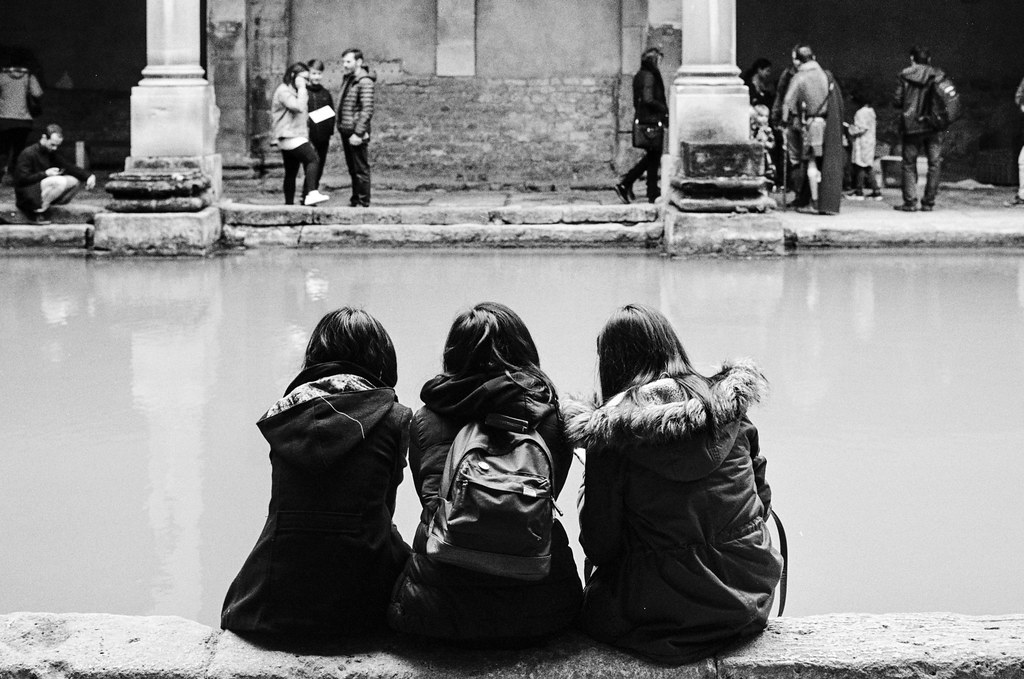
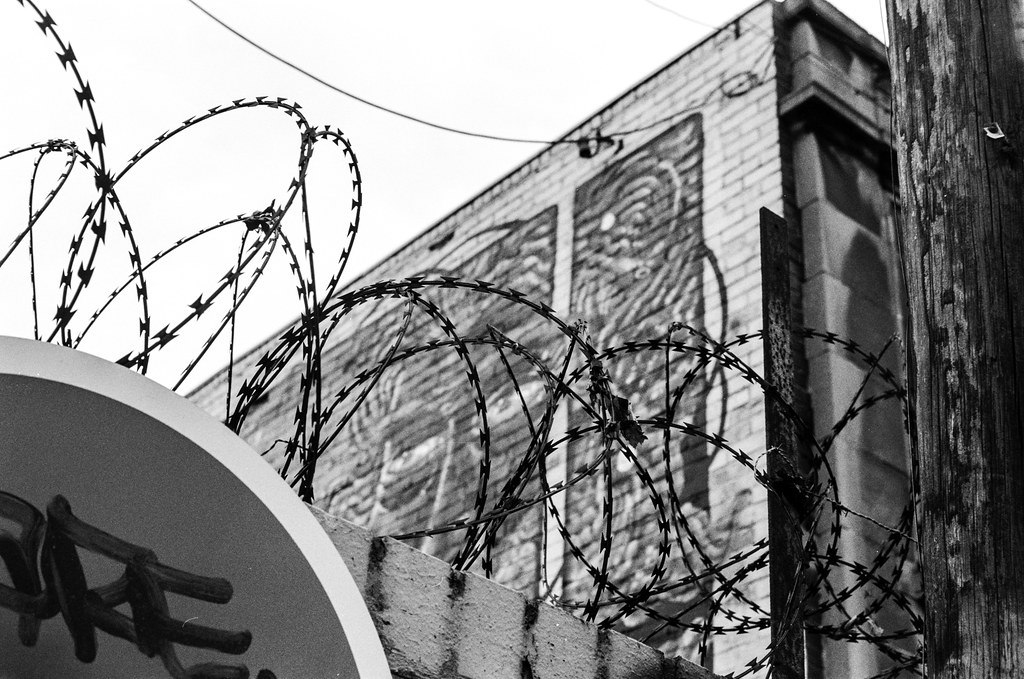
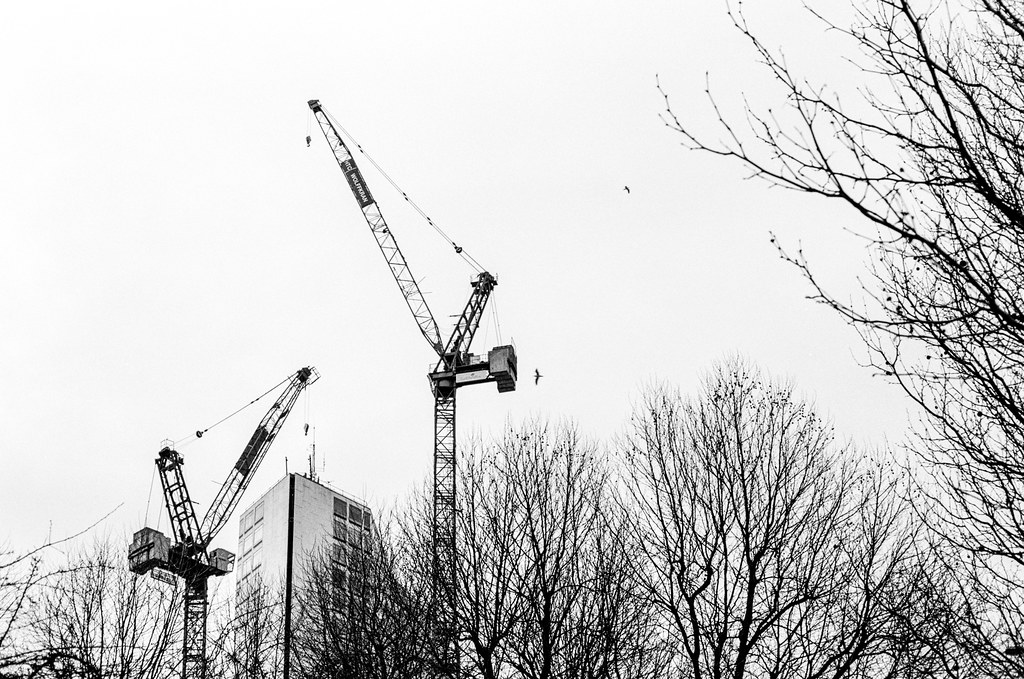
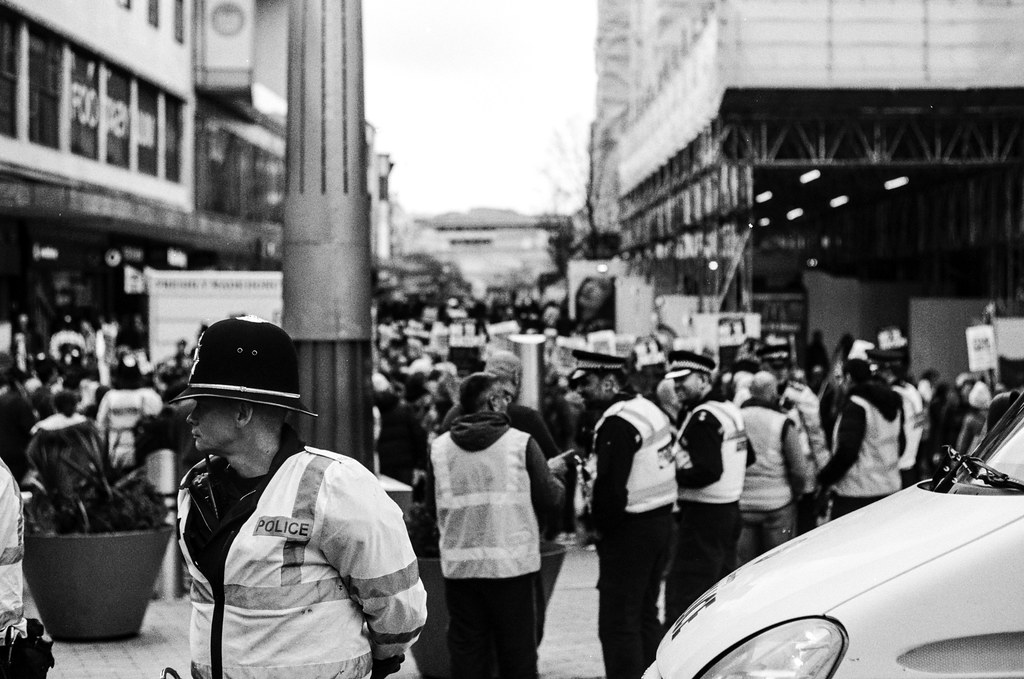
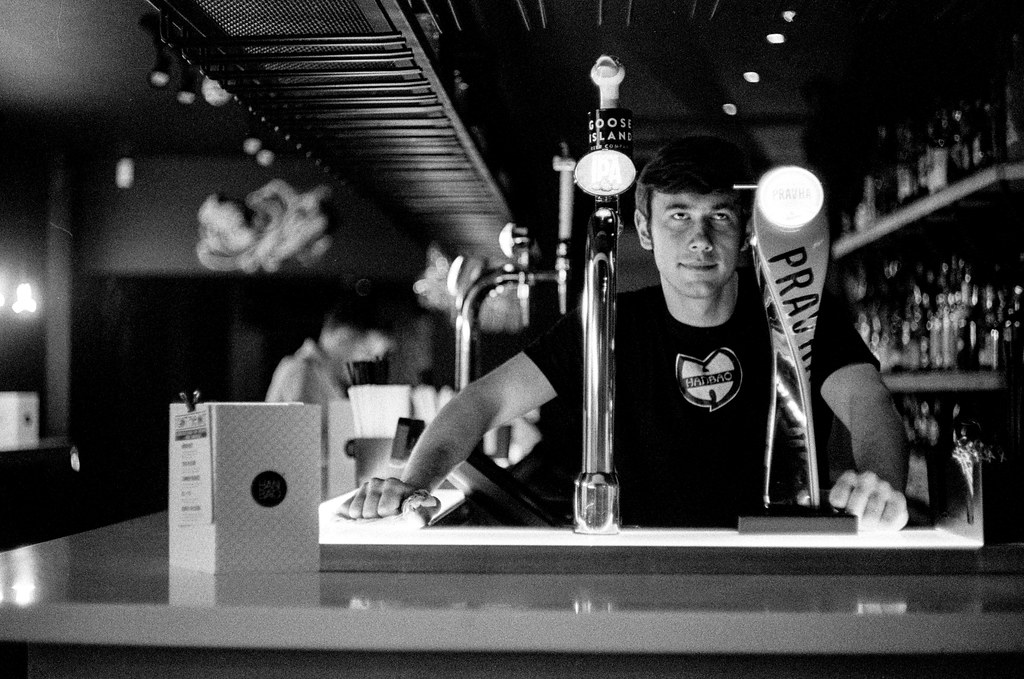
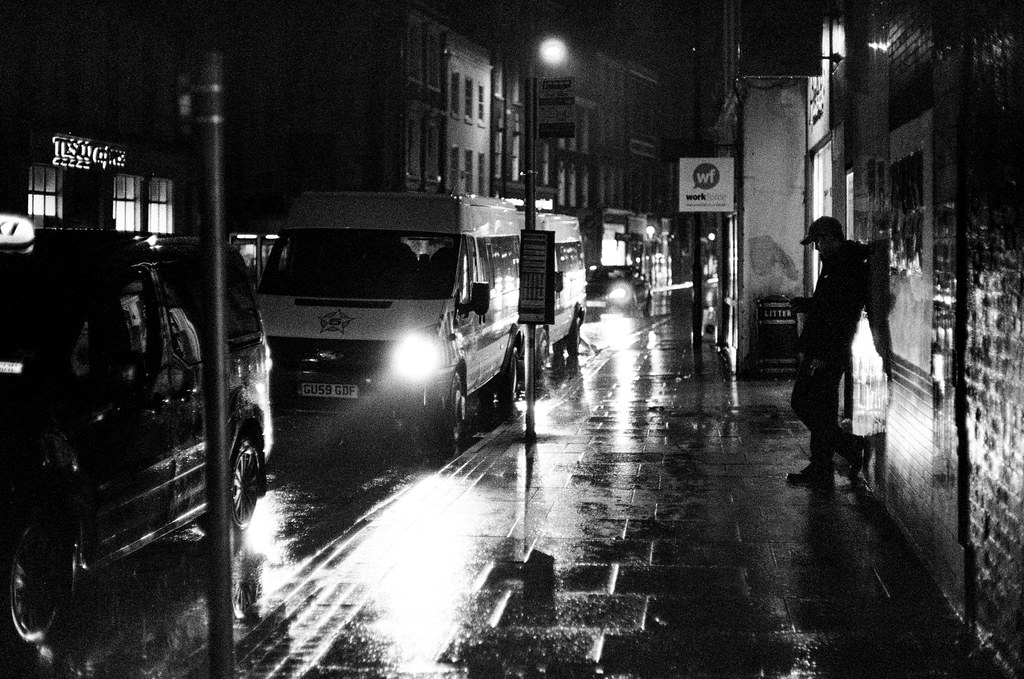
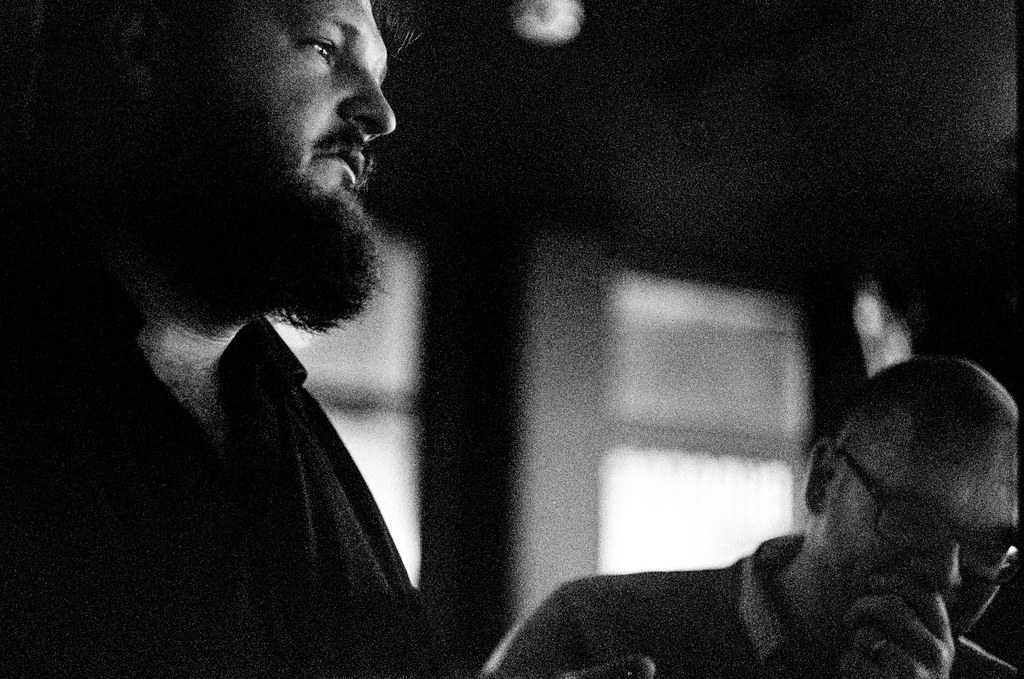
Skip to the end
Setting aside my minor quibble with the rotation of the shutter speed dial, the inexplicable use of plastic and my distaste at the nonsense Leica peddles about the black paint, it’s hard to argue with the Leica MP. In reality, most people who find the Leica MP to be the ideal Leica for them won’t be fazed by the rotation of shutter speed dial or be fussed the use of plastic. Instead, they will likely find an exceptionally well built Leica camera with a simplistic but useful built in light meter. Additionally, those who buy into the Leica mystique will no doubt love all that worn black paint guff, and those who don’t will probably just ignore it as inconsequential marketing tripe and get on with appreciating the patinated aesthetic on their own terms as their camera ages.
As such, it’s fair to say that I’ve possibly harshly picked holes in the Leica MP. The “issues” I’ve highlighted are so minor really that they probably seem daft to those who shoot and appreciate this camera. The fact is though, whilst acknowledging that each time I review a Leica M film camera I find myself coming to the conclusion that the differences between the models are more subtle than I previously thought, I also find myself more strongly identifying the specific features I want from a Leica, and therefore become more certain about which of the models suit me best.
The crux of my point is, however nice the Leica MP is as a camera, it’s not the right camera for me. It’s also the most expensive/valuable standard production run Leica M film camera. So whilst most articles about this camera take the view that it’s the embodiment of “mechanical perfection”, the result of years of refinement of the Leica M concept, and perhaps even the ultimate Leica film camera, were I to buy one I’d be paying over the odds for features and fluff that I don’t need and that don’t wash with me respectively.
The reality is, if the Leica rangefinder concept is right for you, there’s more than a handful to choose from. Just because this one is the most expensive and is “the ultimate tool” it doesn’t mean it’s the right specific Leica camera for you. Of course for those who find the combination of features to suit them best (and can afford the premium), they really are in for a treat – there’s no doubting that the Leica MP is a truly excellent camera!
Hamish
Share this post:
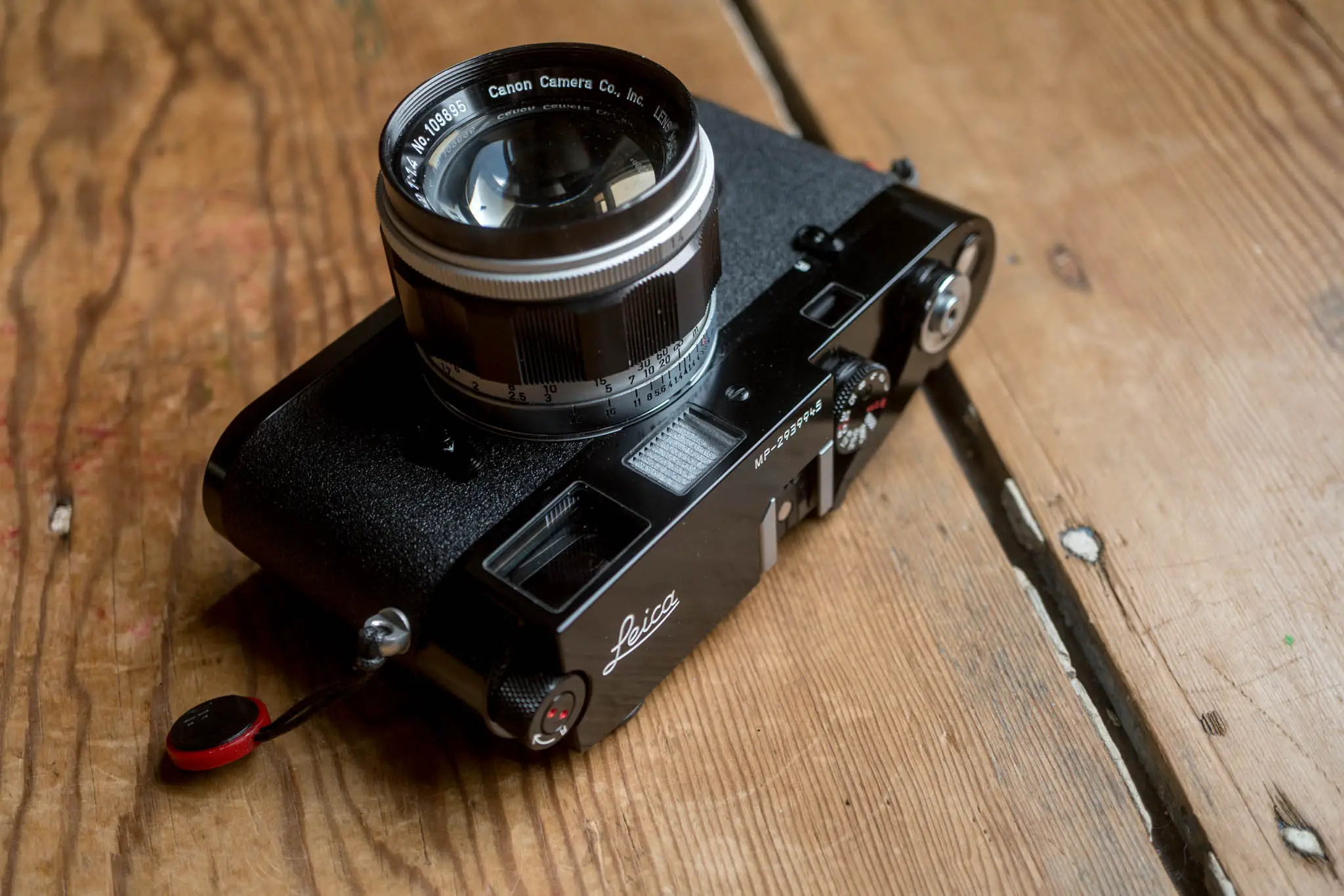








Comments
Terry B on Leica MP review & some wider thoughts on “the ultimate tool”
Comment posted: 06/05/2018
Hamish, as I read this, I started to get a bit hot under the collar and this wasn't helped by the unseasonably high temperatures we are currently experiencing. I was pleased by what followed in this excellent view of the MP from your personal perspective. But it does smack of Leica perpetuating the Leica myth, or for vain photographers. Which other camera manufacturer would dare make the same claim? As you point out, though, it doesn't, fortunately, make it a bad camera. It is still a Leica, after all.
I wasn't aware that post- the M6 Classic, the shutter dial rotation had been reversed, something possible as there is no need to perpetuate the pin coupling for a Leicameter. This wouldn't bother me so much, as metering my M6 I varied the aperture, having set a shutter speed for the general shooting scenario, although I agree having the 3 LED readout is a move in the right direction. Couldn't resist the pun. :d)
Comment posted: 06/05/2018
Comment posted: 06/05/2018
Adam Laws on Leica MP review & some wider thoughts on “the ultimate tool”
Comment posted: 06/05/2018
For me the traditional look of a metered camera equipped along with the wonderful film advance action was enough to suck me in (I really do love the advancement). Helped with stumbling on a practically new chrome version for a good price. I looked at M3’s but I really wanted a meter and the black paint on the M6 Millennium edition with the addition of the red dot turned me off.
Quick question how did you find the VF? Any improvements with your other models? I never had any issues of note with my M6 or M7 that a little eye wiggle didn’t sort out – but not having another Leica to compare the VF in my MP I was wondering if any “improvements” on the MP were negligible at best.
Comment posted: 06/05/2018
Comment posted: 06/05/2018
Comment posted: 06/05/2018
Richard on Leica MP review & some wider thoughts on “the ultimate tool”
Comment posted: 06/05/2018
Comment posted: 06/05/2018
dezutter tjen on Leica MP review & some wider thoughts on “the ultimate tool”
Comment posted: 06/05/2018
Comment posted: 06/05/2018
Comment posted: 06/05/2018
Comment posted: 06/05/2018
Jerome Ibanes on Leica MP review & some wider thoughts on “the ultimate tool”
Comment posted: 06/05/2018
George Appletree on Leica MP review & some wider thoughts on “the ultimate tool”
Comment posted: 06/05/2018
When I finished, no thanks, not even this one.
StephenJ on Leica MP review & some wider thoughts on “the ultimate tool”
Comment posted: 06/05/2018
Fortunately for me, unfortunately for the dealer, I discovered that the light meter did not operate when I put the battery in... It turned out that the light meter was broken and would cost a kings ransom to repair, I was able to return the camera and forget about "black paint". A close shave indeed.
Saying that, I do have a "black paint" Leica; it is a Leica iii also known as the "Model F".
It was made in 1933, it does have worn paint, and the nickel coated bits are well patina'd too, but what with 85 years of being chucked about and carried through a world war, it is to be expected.
This is not a dentist's camera, it is a shabby little thing and the Elmar lens was at best, passable. I have replaced it with a Voigtlander SnapShot Skopar 25mm F4 lens that I saw reviewed on this very site, and it has turned the little Leica into a fantastic tool.
Oh, my favourite M and I have had a lot of them, is the one I have now, a chrome M4 that WAS pristine, but has now had a year of my tender caresses, I have a W. Nikkor F2 50mm ltm lens on it, which in my view outdoes all of the Leica 50's that I have used... I admit I haven't tried the APO Summicron yet.
The point about tools is they need to be used, rather than looked at.
Comment posted: 06/05/2018
Comment posted: 06/05/2018
Nelson M on Leica MP review & some wider thoughts on “the ultimate tool”
Comment posted: 06/05/2018
At the risk of sounding uncharitable, the earnestness of this post strikes me as being a little overwrought. There are some absolutely valid critiques that are touched on here regarding the MP — its plastic ISO dial being chief, in my opinion, among them. The glossy black paint is also a detail that is worthy of a beat of discussion, mostly because it gathers fingerprints and other hand grime more readily than the silver and matte black surfaces of other cameras. There’s also a kind of preciousness signaled by the shiny finish that flies in the face of the discrete nature of the object that famous photographers from the past wax about when discussing Leica.
However, in my view, the cost of the MP is the most damning factor here. And, unfortunately, that’s a detail that is shared with the M-A and M7. Being that we’ve just seen another global price hike from the company, the attainability of Leica M cameras continues to be virtually impossible for many, and will always be a source of frustration for those who wish that the conversation was more about the images captured with the tool, rather than the allure of the tool as an object.
Truth be told, I own an MP. It’s my only Leica, and Hamish was kind enough to allow me to write about it on this site (https://www.35mmc.com/21/02/2018/5-frames-withrames-leica-mp-portra-400-lots-sun/). I love the camera. I was ready to buy a secondhand M6 when I found it—also used—for a competitive price. Nevertheless, I am very aware of the fact that it can fairly be seen as jewelry every bit as much as a photographic tool.
Hamish summed up his attraction to the Leica M3 in his post ‘The Lure of the Uncomplicated Camera’ by saying, “I know exactly what I’m getting [when using the M3]; I just have to set shutter and aperture to appropriate settings for the subject, the light and film contained within, and I get a predictable result.”
When looked at through that lens (forgive the pun), the Leica MP holds its own as being a superb tool for making photographs. It’s younger age, compared to other Leica M’s (and most other popular analogue 35mm cameras) means it will also be a reliable companion for many years to come—so long as you stay on top of wiping off your fingerprints. I just wish they weren’t so damn expensive.
Comment posted: 06/05/2018
Evan Bedford on Leica MP review & some wider thoughts on “the ultimate tool”
Comment posted: 07/05/2018
However, for really frigid hiking, my M4-P and a small light meter secreted away in an inner pocket does the trick also.
John Lockwood on Leica MP review & some wider thoughts on “the ultimate tool”
Comment posted: 07/05/2018
As to the MP feature set, I too am left scratching my head. One point not discussed is the SIZE of the shutter speed dial. Our M4-Ps have the small dial too, but with a notch to mesh with the Leica meter. Obviously this isn't needed with a metered camera, but why revert to the tiny wheel after the M6TTL "fixed" both the size and rotation problem? What do you think of the haptics of the small dial compared to the M7? To purposely imbue a camera with features that have been superseded by common sense is beyond comprehension.
Maybe Daimler should bring a Mercedes to market with a manual crank on the front for those nostalgic to start their automobiles "the right way"?
Dan Castelli on Leica MP review & some wider thoughts on “the ultimate tool”
Comment posted: 07/05/2018
The M3, M2, & M4 (and it's variants of -2 & -P) stay true to this quote by Ms. Freund. With simple viewfinder, the super silent shutter and the ability for the camera to seem to be invisible, you can shoot the moments between heartbeats. That is what the Leica is all about, Charlie Brown. Not megabytes or black paint or the direction of rotation of the shutter speed dial. It's not about bokeh. It's about fitting a 50mm or 35mm lens, and watching and waiting. It's about connecting with your subject on a human level, and the trust they give to you to make a honest photo of them. You've had a damn good day shooting if you expose 36 frames and one or two come out, worthy to be printed.
It's about slowing down & looking & seeing. I was in DC on Veteran's Day back in 1999. I had just make a shot of John Kerry talking to a group of Viet Nam vets @ The Wall. I backed away, and a guy shooting for the WaPo said to me: 'you guys with Leica's are like thieves, you watch & wait, then slip in, steal a shot and slip out.' I was humbled by the complement (yeah, I did write in down in my notebook that day.)
People love the mystique/aura of the Leica; they love posting comments ad nauseam on forums debating the build quality of Voigtlander lenses; or comparing shots of brick walls to show us the mortal sins of barrel distortion or bad bokeh (I should get a dog and name him that!) But, they spend little time shooting, and even less time really looking & seeing. They do have that Leica around their neck like some sort of camera ID card, and peer about when in public hoping someone will notice them.
I'd go as far as to argue that meter displays in later M (film) models or digital innards run counter to what a Leica really is. Other cameras can have all of that, they can boast great lenses & CMOS sensors. Hell, everyone knows your smartphone is technically more advanced than a Leica. But, they aren't a Leica in the truest sense.
Using my M2 is (for me) akin to listening to the Delta Blues: it's raw, it's honest, and it doesn't pretend to be something it isn't. And once in awhile, if the photo gods smile upon me, I'll get an exceptional shot. Then when people look at the print and ask me what type of camera I used, I tell them 'a Leica' and they silently nod, then tell me they took a great shot of a sunset with their iPhone, and the moment passes.
Get out & shoot; worry less about equipment. Work on refining your vision and be smug in the knowledge the Leica won't fail you. Your boss might treat you like a POS, your wife may cheat w/the milkman and run you into debt, your dog might die and your Buick might get repo'd, but your Leica will be true to you.
Leo Tam on Leica MP review & some wider thoughts on “the ultimate tool”
Comment posted: 09/05/2018
Nice camera, but the mystique is ridiculous (just think of the Leica M-P correspondent's edition)
Dan Stevenson on Leica MP review & some wider thoughts on “the ultimate tool”
Comment posted: 09/05/2018
To be completely honest my Pentax K1000 is just as nice, just as easy to use, and I seriously doubt that I can tell which camera was originally responsible for which print on the wall.
When all is said and done my K1K is a more flexible tool. If for some reason I had to sell any of them the Leica's would most certainly go first.
Jasper on Leica MP review & some wider thoughts on “the ultimate tool”
Comment posted: 09/05/2018
Comment posted: 09/05/2018
Andreas on Leica MP review & some wider thoughts on “the ultimate tool”
Comment posted: 10/05/2018
I have been a film shooter (nikon fm2 nikkor lenses, tri-x, fujichrome) for about 15 years then I switched to digital and, as a result, I almost completely dropped down photography. Now finally I bought a leica m5, a summicron 35 and a nikkor 50 f/2 hc while my wife bought a m10 so we may share the lenses. This is a very nice review. I think that the MP is a very nice camera (btw as if now it is available also in black chrome) but I do not like the vf LEDs. M5’s needle better suits my way to meter which is kinda simplified zone system. I also liked your pictures here. May I ask you which film and developer did you use! Thanks!
Comment posted: 10/05/2018
Neil Woodman on Leica MP review & some wider thoughts on “the ultimate tool”
Comment posted: 10/05/2018
If anyone is interested in guitars the Fender Custom Shop will make you one which looks like it's been dragged along the back of a truck on concrete and glass. At least Leica haven't gone this far....wait what about that Lenny Kravitz model....
Peter Boorman on Leica MP review & some wider thoughts on “the ultimate tool”
Comment posted: 23/05/2018
.
Fascinating how 'taste' changes over the years...
EvangelionCK on Leica MP review & some wider thoughts on “the ultimate tool”
Comment posted: 29/05/2018
My Leica M3 Titan Panda & Leica M4-P Super-Rat - CameraWorks-UK Custom Cameras - 35mmc on Leica MP review & some wider thoughts on “the ultimate tool”
Comment posted: 22/07/2018
Another Leica MP Review - by Adam Laws - 35mmc on Leica MP review & some wider thoughts on “the ultimate tool”
Comment posted: 07/10/2018
Tom Lamar on Leica MP review & some wider thoughts on “the ultimate tool”
Comment posted: 17/11/2018
The Leica M3 - a review, and thoughts on finding the right version for me on Leica MP review & some wider thoughts on “the ultimate tool”
Comment posted: 22/04/2020
Leica M10-P Review - A Brilliantly Underwhelming Digital Rangefinder on Leica MP review & some wider thoughts on “the ultimate tool”
Comment posted: 06/07/2020
Baladino on Leica MP review & some wider thoughts on “the ultimate tool”
Comment posted: 24/05/2023
Röd White on Leica MP review & some wider thoughts on “the ultimate tool”
Comment posted: 07/06/2023
I'm a bit late to the party as this article dates back to 2018, but it's still relevant and you nailed it with your viewpoint on the MP. I think I told you that I'd bought an M-A for my year-long film project which has become more and more addictive and I really enjoy using it as my every day carry.
I like the mechanical simplicity of the M-A and like you am not a fan of brassing, so I bought the silver chrome version. Being totally comfortable with sunny-16 which has always served me well, no-lightmeter, no worries or battery anxiety.
Recently had the opportunity to purchase a mint MP also in silver chrome. They don't come up often and I got it for such a good price that I won't lose anything if I sell it on straight away so I took a punt thinking it would compliment my M-A really well running 2 films, or shooting fast glass with variable ND filters and metering through the lens/ND.
I knew about the shitty plastic ISO dial, and light meter working in reverse so wasn't too concerned about that.
Funny how the thing that drew me into purchasing the MP (the light meter and good price of course) might be the reason I sell it... two weeks after owning it the battery in the light meter died. Probably my fault because I don't leave the camera in the 'B off' position. (does anyone?). I'm using the camera most days, so saw little point. Anyway, I took the camera out loaded with some ISO 80 film an f1 lens fitted with variable ND and just got the battery dead light, no early warning, just battery dead and no light metering.
Sunny-16 got my shots sorted but I removed the variable ND and just worked out the actual apertures. It did rather make me question the so-called Mechanical Perfection... At least I didn't sell the M-A to get the MP.
My money is definitely on the M-A as the ultimate film camera. Not the black one though, I don't really like the finish much. The silver chrome looks and feels really nice and strikes me that it'll be harder wearing than the black. We'll see after another 6 months as it'll have had hundreds of rolls though it by then at the rate I'm buying up bulk film.
I'm really interested to know how other people get on with light-meter batteries? Maybe it had been in the camera since new (Nov 2020) and just ran out when I picked it up. The manual states they're expected to last for 3600 exposures with 14s metering time per shot (100 36exp films). Do people turn them off between use? I can't imagine I'll ever reliable remember to do that.
Huss Hardan on Leica MP review & some wider thoughts on “the ultimate tool”
Comment posted: 08/06/2023
You don't know the provenance of the battery, so I wouldn't judge anything on this experience. Get a new battery - they're cheap! - and start afresh. I also use an M-A and do find a metered Leica like my MP (or M5/6/7) can be more convenient especially when the light levels drop.
Sunny F16's accuracy depends on the time of day/length of daylight/time of year etc. If you're worried about battery life, carry a spare. They are tiny. If you do not carry a spare and the battery expires, your MP just became an M-A!
Comment posted: 08/06/2023